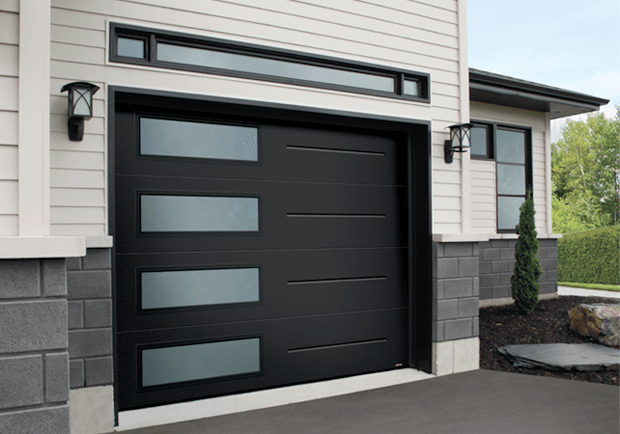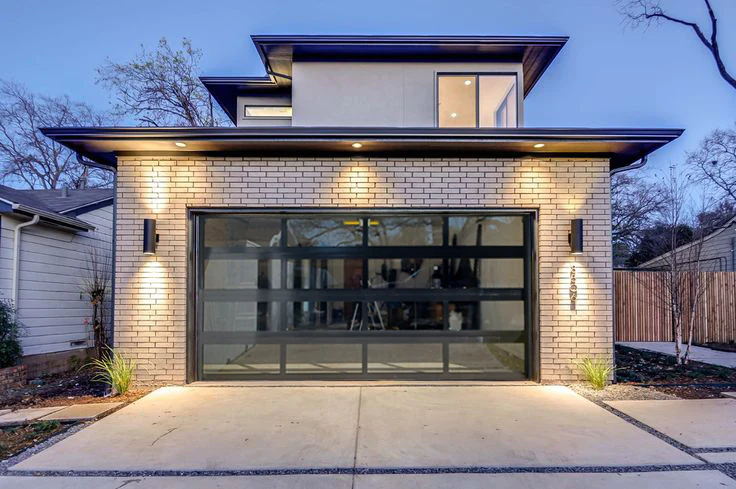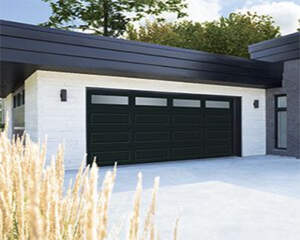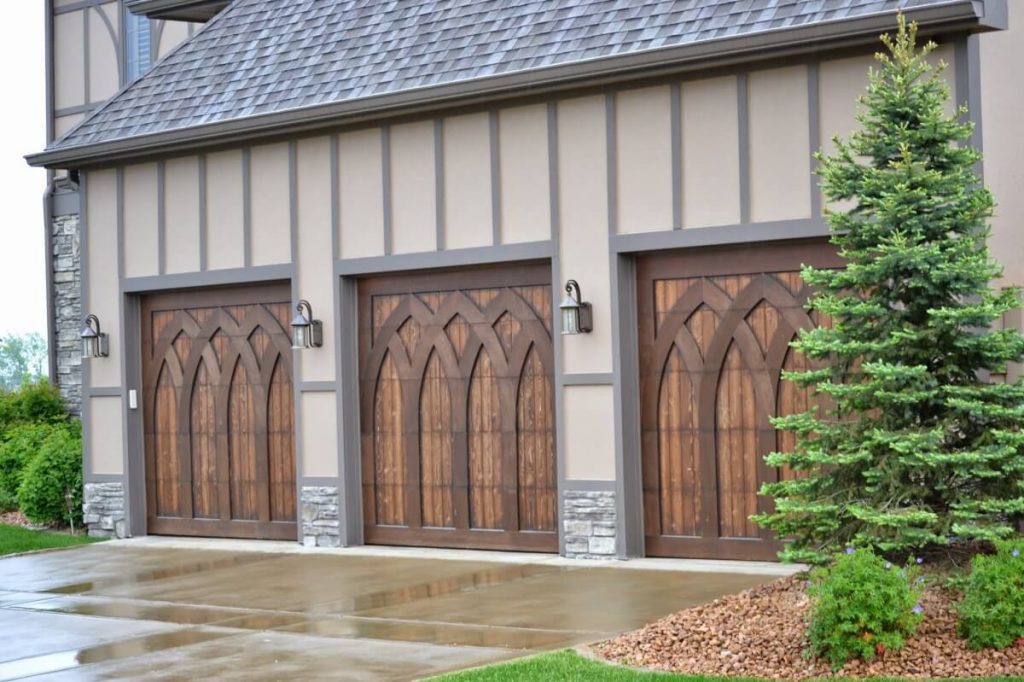Exploring the Components of a Garage Door: A Comprehensive Guide
Exploring the Components of a Garage Door: A Comprehensive Guide
Introduction to Garage Doors and Their Key Components
A garage door is an essential component of any residential or commercial property that provides security, convenience, and aesthetic appeal. Understanding the various components and parts of a garage door can help homeowners and businesses make informed decisions when it comes to maintenance, repairs, or replacements.
One of the main elements of a garage door is the panel or sections. These are large, rectangular panels that make up the majority of the door’s surface. Garage doors typically consist of multiple panels connected together to allow for smooth movement when opening or closing.
Another crucial component is the track system. The track serves as a guide for the door panels to move along smoothly. It is usually made from durable steel and includes vertical tracks that run along the sides of the opening and horizontal tracks at the ceiling level.
Garage doors also rely on springs for proper functioning. There are two types of springs commonly found in garage doors: extension springs and torsion springs. Extension springs stretch and contract to support the weight of the door, while torsion springs use torque to counterbalance it.
To operate a garage door, a motorized opener is required. This opener consists of an electric motor that powers a drive mechanism responsible for moving the door up and down. It also includes sensors for safety purposes, allowing automatic reversal if an object or person obstructs its path.
In addition to these primary components, there are other smaller but equally important parts that contribute to a well-functioning garage door system. These include hinges, rollers, cables, brackets, pulleys, weather seals, and handles.
Regular maintenance and periodic inspections can help identify any issues with these components early on before they turn into major problems. Whether it’s replacing worn-out rollers or adjusting tension in springs, understanding these various elements can empower homeowners and businesses to keep their garage doors in optimal condition.
By having knowledge about different parts of a garage door system like panels/sections, tracks, springs, motorized openers, and other accessories, individuals can ensure the smooth and efficient operation of their garage doors, enhancing both functionality and security.
The Anatomy of a Garage Door: Understanding Each Component
Garage doors are an essential component of any home, providing security and convenience for vehicle storage. Understanding the different parts that make up a garage door system is crucial for homeowners and professionals alike. In this introduction, we will explore the key components of a garage door system, including the garage door panel, opener, springs, tracks, and rollers. By gaining knowledge about these components, you can make informed decisions regarding the maintenance, repair, or replacement of your garage door.
1. Garage Door Panels:
When it comes to choosing the right panels for your home or garage doors, there are several options available. Among the most popular choices are raised panels, flat panels, and carriage house-style panels. Each type offers its own unique aesthetic and functionality, allowing you to find the perfect fit for your personal preference and architectural style.
Raised panel doors feature a classic design with panels that are slightly elevated from the surrounding frame. This type of panel adds depth and dimension to your doors, creating a traditional and elegant look. Raised panel doors are versatile and can complement various architectural styles, making them a popular choice for both residential and commercial properties.
On the other hand, flat panel doors offer a sleek and modern appearance. As the name suggests, these panels lie flat against the door frame without any raised elements. Flat panel doors provide a clean and minimalist look that can enhance contemporary or minimalist architectural designs. They are often chosen for their simplicity and understated elegance.
If you’re looking for a more rustic or vintage touch, carriage house-style panels might be just what you need. Inspired by traditional carriage house doors from centuries ago, these panels replicate the charm of old-world craftsmanship. Carriage house-style panels typically have decorative elements such as crossbeams or X-shaped patterns that evoke nostalgia while adding character to your home’s exterior.
Ultimately, the choice between raised panel, flat panel, or carriage house style panels will depend on your personal taste, the architectural style of your property, as well as any specific design preferences you may have. By understanding these different types of panels and their characteristics, you can make an informed decision that will enhance the overall aesthetic appeal of your home or garage doors while ensuring functionality and durability.
When it comes to constructing panels, there are several materials commonly used, including steel, wood, and aluminum. Each material has its own unique characteristics that make it suitable for different applications. Understanding the properties of these materials can help you make an informed decision when choosing the right panel material for your specific project.
Steel panels are known for their strength and durability. They are often used in industrial settings where robustness is essential. Steel panels can withstand heavy loads and extreme weather conditions, making them ideal for outdoor applications such as roofing and cladding. Additionally, steel panels offer excellent fire resistance and require minimal maintenance.
Wood panels have long been a popular choice due to their natural beauty and versatility. They provide a warm and inviting aesthetic that complements various architectural styles. Wood panels can be easily customized through staining or painting to achieve the desired look. However, it’s important to note that wood requires regular maintenance to ensure its longevity, including sealing or treating against rotting or insect damage.
Aluminum panels offer a lightweight alternative with exceptional corrosion resistance. They are commonly used in both indoor and outdoor settings where weight is a concern but durability is still important. Aluminum panels are often seen in modern architecture due to their sleek appearance and ability to be easily molded into different shapes. Moreover, they require minimal maintenance compared to other materials.
In summary, steel panels offer strength and durability ideal for industrial applications; wood panels provide natural beauty but require regular maintenance; aluminum panels offer lightweight versatility with excellent corrosion resistance. Consider these factors along with your project’s specific requirements when selecting the appropriate material for your panel construction needs.
2. Garage Door Opener:
When it comes to garage door openers, there are several types available on the market. Among them, three popular options are belt drive openers, chain drive openers, and screw drive openers. Each type has its own unique features and benefits that cater to different needs and preferences. In this informative guide, we will explore the characteristics of these different types of openers to help you make an informed decision when choosing the right one for your garage door.
When it comes to garage door openers, there are several key components that work together to ensure smooth and efficient operation. The main components of an opener include the motor unit, remote control system, and safety sensors.
The motor unit is the heart of the opener and is responsible for powering the opening and closing of the garage door. It consists of a powerful motor that generates the necessary force to lift or lower the door. The motor unit also contains gears and drive mechanisms that transfer power from the motor to the actual movement of the door.
The remote control system is what allows homeowners to conveniently operate their garage doors from a distance. It typically consists of a handheld remote control device with buttons that can trigger the opening or closing of the door. The remote control system communicates with the motor unit through radio frequency signals, enabling seamless operation.
Safety sensors play a crucial role in ensuring user safety during garage door operation. These sensors are typically installed near the bottom of each side of the garage door opening and emit an invisible beam between them. When this beam is interrupted by an object or person crossing its path while the door is closing, it automatically triggers a reversal mechanism to prevent accidents or damage.
Overall, these three components work together harmoniously to provide reliable and safe operation for your garage door opener. Understanding how they function can help you make informed decisions when it comes to maintaining or upgrading your opener system.
3. Garage Door Springs:
When it comes to the world of springs, two commonly used types are torsion springs and extension springs. Both of these springs have distinct characteristics and serve different functions based on their design and properties.
Torsion springs, as the name suggests, are designed to provide rotational or twisting force. They work by applying torque when they are twisted or wound up. Torsion springs typically have a helical shape with arms that rotate around a central axis. This design allows them to store and release energy when subjected to a twisting motion. These springs are commonly found in various applications such as garage doors, trampolines, and even in mechanical watches.
On the other hand, extension springs function by extending or stretching when a force is applied. They work in the opposite manner compared to torsion springs. Extension springs consist of coiled wires that extend when pulled apart. When the force is released, they return to their original position. These types of springs are widely used in household items like door hinges, car suspensions, and exercise equipment.
One key difference between torsion springs and extension springs lies in their application and usage scenarios. Torsion springs are ideal for applications where rotational force or torque is required, such as opening and closing mechanisms for doors or lids. On the other hand, extension springs excel in situations where linear force is needed or where there is a need for tensioning or balancing objects.
Additionally, another notable difference lies in their configuration and installation methods. Torsion spring systems usually require mounting brackets at both ends with one end attached to a fixed point while the other end connects to the moving component that requires torque assistance. Extension spring systems typically consist of two separate coils connected at each end with one end attached to an anchor point while the other end connects to the moving part requiring tension.
In summary, torsion springs provide rotational force through twisting motion while extension springs offer linear force through stretching motion. Understanding the differences and functions of these springs is crucial in determining the most suitable type for a specific application. Both torsion springs and extension springs play vital roles in various industries, ensuring smooth operations and reliable performance.
4. Garage Door Tracks:
When it comes to garage door systems, there are different types of tracks that play a crucial role in the smooth functioning of the door. These tracks guide the movement of the door panels and ensure stability and alignment throughout its operation.
The most common type of track used in garage door systems is the standard lift track. This track is typically installed vertically along the sides of the garage opening, allowing the door to be lifted straight up when opening and lowered back down when closing.
Another type is the low headroom track, which is designed for garages with limited overhead space. This track allows for a more compact installation by angling the tracks towards the rear of the garage, providing additional clearance for overhead obstructions.
For garages with high ceilings or those requiring vertical storage space, a high lift track system may be used. This type of track raises the door higher than standard lift tracks, allowing for increased storage space above the door.
In certain cases where there is limited headroom or unconventional ceiling structures, a vertical lift track system may be utilized. This track runs vertically along one side of the garage opening and then curves horizontally towards an overhead area before connecting to a horizontal track. It provides maximum clearance and flexibility in challenging installation scenarios.
Lastly, there are also specialty tracks available for specific applications such as sliding doors or custom-designed doors that require unique tracking systems tailored to their specific requirements.
Choosing the right type of tracks for your garage door system depends on factors such as available space, ceiling height, and specific needs. Consulting with a professional installer or manufacturer can help determine which type will best suit your requirements for optimal performance and functionality.
Tracks are an essential component of various vehicles and machinery, including construction equipment, agricultural machinery, and even recreational vehicles like ATVs. However, they can often encounter issues that hinder their optimal performance. Understanding common track problems and knowing how to resolve them is crucial for maintaining the efficiency and longevity of these tracks.
One common issue with tracks is track misalignment. This occurs when the tracks are not properly aligned with the sprockets or idlers, resulting in uneven wear and potential damage to both the tracks and the undercarriage components. Regular inspection of the alignment and making necessary adjustments can prevent further complications.
Another prevalent problem is track tension. Tracks that are either too loose or too tight can lead to premature wear and tear. Maintaining proper tension ensures optimal traction, reduces slippage, and minimizes stress on other components such as rollers and idlers.
Track damage is another concern that may arise from various factors such as debris accumulation, impact from obstacles, or excessive usage on rough terrains. Regular cleaning to remove debris along with inspecting for signs of wear or tear is essential in identifying potential issues early on.
Effective track maintenance practices play a vital role in preventing major problems from occurring. This includes regular cleaning to remove dirt, mud, or debris that may cause excessive wear or hinder smooth operation. Lubrication should also be carried out periodically to reduce friction between moving parts.
When it comes to resolving track issues, it’s crucial to consult a professional if you lack expertise in this area. They can assess the severity of the problem and determine whether repairs are necessary or if replacement parts are needed.
In conclusion, addressing common track problems through regular maintenance practices will help extend their lifespan while ensuring optimal performance. By being proactive in identifying issues early on and seeking professional assistance when needed, you can avoid costly repairs and keep your tracks operating smoothly for years to come.
5. Garage Door Rollers:
Garage doors are not only essential for the security of our homes but also play a crucial role in enhancing the overall curb appeal. One important component of garage doors that often goes unnoticed is the rollers. These small but mighty components help to facilitate the smooth opening and closing of the garage door.
There are different types of rollers available in the market, each offering distinct advantages. One popular option is nylon rollers. These rollers are known for their durability and resistance to rust and corrosion, making them suitable for areas with high humidity or coastal regions. Nylon rollers also provide quieter operation compared to other types, making them ideal for those who value peace and quiet.
Another common type of roller is the steel roller. These rollers offer strength and stability, making them a preferred choice for heavier garage doors that require additional support. Steel rollers can withstand heavy loads without compromising performance or durability.
For those seeking maximum quiet operation, ball-bearings are an excellent choice. These rollers feature small ball bearings that reduce friction and noise during operation. The smooth movement provided by ball-bearing rollers ensures a virtually silent opening and closing experience, perfect for homeowners who value tranquility.
In conclusion, choosing the right type of roller for your garage door is crucial in ensuring smooth functionality and quiet operation. Whether you opt for nylon rollers, steel rollers, or ball-bearing rollers, each type has its unique benefits that cater to specific needs and preferences. By investing in high-quality garage door rollers, you can not only save time and energy but also enjoy a quieter and more efficient garage door system overall.
Proper lubrication and regular maintenance play a crucial role in ensuring the smooth operation of various mechanical systems and equipment. By providing a layer of protection between moving parts, lubricants help reduce friction and wear, thus extending the lifespan of the machinery.
Regular maintenance involves inspecting and servicing equipment on a scheduled basis to identify any potential issues or signs of wear. This proactive approach allows for timely repairs or replacements before major breakdowns occur, minimizing downtime and costly repairs.
Effective lubrication not only reduces friction but also helps dissipate heat generated during operation. This heat management prevents excessive wear and damage to critical components, ensuring optimal performance over time.
Furthermore, proper lubrication helps prevent corrosion by creating a protective barrier against moisture and contaminants. This is particularly important in environments with high humidity or exposure to harsh elements.
By investing in regular maintenance and implementing proper lubrication practices, businesses can achieve smoother operations, increased equipment longevity, reduced energy consumption, improved safety standards, and ultimately lower overall operating costs.





